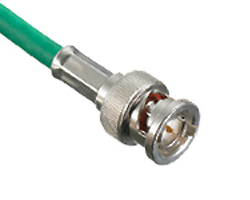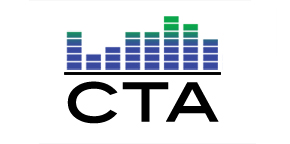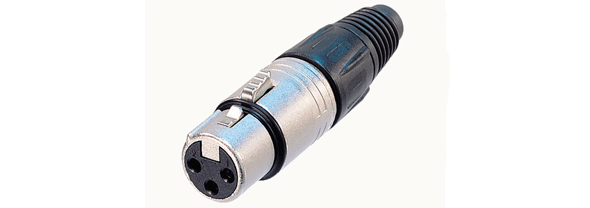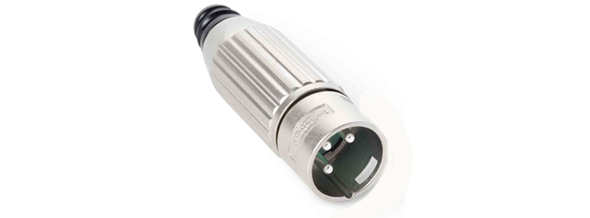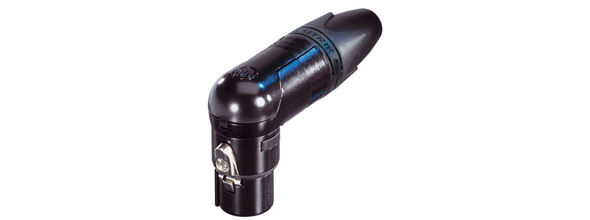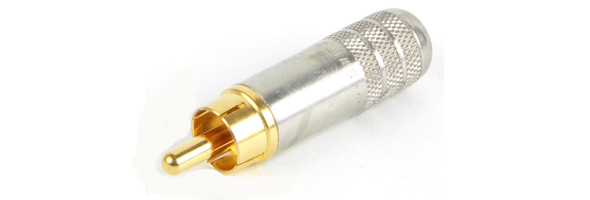This post is a response to reader requests.
Justin Geogehgan thought it would be fun to do a post about which connectors I like to use when, and Duke Dejong really wants to start a debate about this (though he says he doesn’t), so I thought I’d kick it off.
All of this came out of a Twitter thread asking about different cable/connector assemblies and whether to buy or build your own. Personally, I prefer to build my own.
In fact, I did a series about how to build your own cables a few years ago if you’re interested.
I like to build cables because I get exactly what I want, both in terms of cable and connectors, plus I can make them to the exact length needed, and even do custom configurations.
For example, we just built some cables for our percussion mic’ing set up. We have two shorter (10 feet or so) cables with right angle XLRs on the mic end and regular XLRs on the snake end for the congas, and a slightly longer 15-foot cable with a right angle XLR on the mic end for the overhead mic. I could have ordered those from someone, but it was just as easy to make them.
Dave Stagl pointed out that when you factor in labor, it’s probably cheaper to just buy them, and he’s probably right. However, if I’m in production mode and really cranking out a bunch of cables, I can build a lot of them in an hour.
While I really prefer to make my own, I’m not dogmatic about this. If you buy cables, I won’t think less of you. If you want to build them, here is my list of favorite connectors.
XLR
I’ve long been a fan of the Neutrik NC3 series. They are well made, and last seemingly forever. I’m sure I’ve soldered hundreds of them over the years.
The only thing I don’t like about them is the four-piece design. Wrangling those four pieces is not a big deal if you’re doing a few ends, but when you need to re-end a snake or build a custom harness, it’s a lot of extra parts to handle. So I’ve recently made a switch.
My current go-to XLR is the new Switchcraft AAA series. They are just two pieces and go together really quickly.
Many of us have a bad taste in our mouths regarding Switchcraft XLR connectors, recalling the old silver ones with rubber strain reliefs. Those fail on a incredibly regular basis, and I take them off when they do.
However, having used the AAAs for the last three years without a failure, I feel pretty good about continuing to use them.
When it comes to right-angle XLRs however, I go back to Neutrik. We’ve actually switched a lot of our stage cables to RA plugs.
The entire drum kit is now RA, as is the aforementioned percussion set up. I find this keeps the cabling a lot neater, and makes it easier to keep the tom mics close without the cable getting caught up in the cymbals.
1/4-Inch
For the standard phone plugs, I’ve long used the Switchcraft 280 (TS) and 297 (TRS). Sometimes I’ll use Neutrik, but honestly, I hate the solder cups on the Neutriks.
The 297 and 280 are a bit of a pain to terminate, but once you get used to it, you can fly through them. Both of those plugs are nickel and I’ve not had many problems with them.
When it comes to RA plugs, I do have to go back to Neutrik. Switchcraft makes them, but I don’t like them.
In fact, I’m getting ready to make some guitar cables for my daughter; two for the guitar to tuner connection that will have an RA plug on the guitar end, a straight connector on the tuner end and be about 10 feet long. I’ll make two more 2.5-foot cables with straight plugs on both ends to connect the tuner to DI. Those are all going to be Neutriks (for visual consistency, black with gold plated ends).
The material cost for those cables (with shipping) was about $57. Could we have gotten a better deal at Guitar Center? Maybe, but I know these will be made well and won’t fail for a long time, if ever. And I get exactly what I want.
RCA
Sometimes we still have to use RCA plugs (grrr…). When I do, I reach for the Switchraft 3502. Just be careful to not apply too much heat to the center terminal when soldering or you’ll melt the insulation. Don’t ask me how I know this.
1/8-Inch
I hate doing 1/8-inch plugs and jacks. Honestly, I’ve yet to find an 1/8-inch jack that works reliably (we’ve tried 3 of them), and while I’ll use Switchcraft plugs when I need to, I hate terminating them. That’s one class of cable I think it’s worth it to pay someone else to make.
BNC
While not used that often in audio (except for MADI), I do make a lot of BNC cables. For the last 15 years I’ve used Kings 2065 series exclusively and have yet to have one fail. As long as you follow the directions and crimp them with a proper crimper (and not a pair of slip joint pliers…), you’ll be fine.
Also, make sure you get the right part for the cable you’re using. Kings makes about a dozen different varieties for different cables, use the cross-reference charts to make sure you use the right one.
Wow, I didn’t think I would be writing 1,000 words on connectors but there you go. What do you use when making cables? Or do you prefer to buy them pre-made?
Mike Sessler is the technical director at Coast Hills Community Church in Aliso Viejo, CA. He has been involved in live production for over 20 years and is the author of the blog, Church Tech Arts . He also hosts a weekly podcast called Church Tech Weekly on the TechArtsNetwork.


